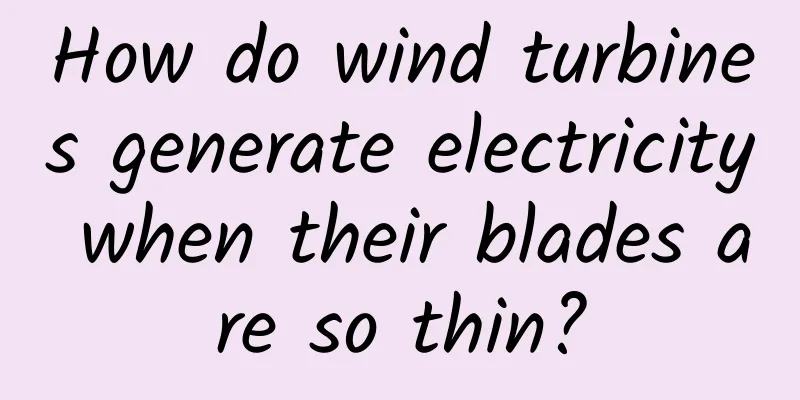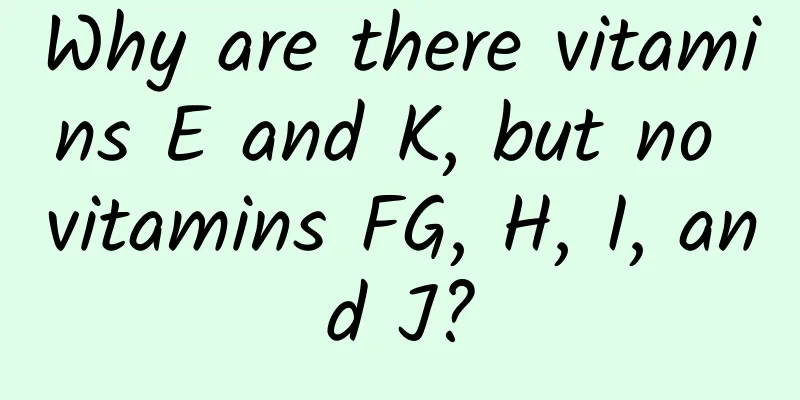How do wind turbines generate electricity when their blades are so thin?

|
The weather is getting colder and colder, and the wind is getting stronger. I really want to stay at home. However, there are many people who are holding on in the cold wind. That's right, they are: Sorry, I put the wrong picture, it's this: "Because I am cold, I am not afraid of the cold wind! Spring, summer, autumn and winter, dance with the wind!" That's a wind turbine! Wait, have you noticed a problem: the blades of wind turbines are so thin! Compared with windmills, this intuitive contrast is very confusing. Can such a small windward surface really effectively extract wind energy? Wind turbine blades are being transported. Source: Internet What we want to discuss here is this ratio! Compared to this length and the area swept by the blade, this is really too thin! Wind can generate direct thrust on the windward surface to do work, such as small windmills, sailboats, etc., but the blade is so thin that it is obviously not intended to take advantage of this thrust, so how does it turn? Take a closer look at this leaf: Do you think the shape of this blade looks familiar? Isn't it the shape of an airplane wing? The top is a side view of an airplane wing, and the bottom is a side view of a wind turbine blade. Image source: Internet Except that the shape of the wind turbine blades looks a little fatter, it is hard not to doubt the similarity here. Could it be that the wind turbine shown in the previous picture obtains power in the same way as the airplane? In addition, if we follow the most natural idea, why not design it like a windmill and directly use wind pressure? Let's discuss these issues! Source of aircraft lift In order to understand the above questions, we first need to briefly introduce the source of aircraft lift. On all major platforms, we can see people arguing about the principle of lift of aircraft, whether it is Bernoulli's principle or Newton's third law. In fact, the reason why these qualitative perspectives are controversial is precisely because they are unclear in causal relationships and inconvenient in quantitative analysis . Even if an aerodynamic problem under complex boundary conditions (for example, the shape of the wing can be various, and the actual scene can also be a kite, an airplane, or a rocket), can be summarized in one or two principles, it cannot escape the complex but essential precise simulation calculation in specific applications , otherwise we can't rest assured that the aircraft we design will fly! The quantitative perspective of wing lift is not often discussed in popular science. To help us understand the operation of wind turbines, let us briefly discuss this and give a simpler and more effective perspective (simplicity may lose a certain degree of rigor), while giving a corresponding rigorous quantitative perspective . When the wing passes through the air at high speed, the air exerts forces on the wing in two directions: resistance in the direction of flight (such as air friction resistance, pressure difference resistance, etc.), and the most important lift . The former is balanced by the thrust of the engine, while the latter balances gravity, allowing the aircraft to soar. Aircraft force diagram When a wing passes through the air, how does the air flow relative to the wing? Wind tunnel tests can tell us that the actual flow of gas relative to the wing is as follows: Illustration of streamlines in a small wind tunnel simulation experiment. Source: Internet That is, the air tends to flow along the wall . Such a process leads to a very important result: after the air passes through the wing, it will be deflected downward . You may think of a familiar name: Coandǎ effect . So here comes a simple image! Loosely thinking, since the wing pushes the air downward, it exerts a downward force on the air, and accordingly, the wing will experience lift! In simpler situations, this image can also be used loosely as a simple criterion for judging whether lift can be generated, and it is very useful. For example, why does a thin plate like a kite experience lift: Schematic diagram of the streamlines of air passing through a flat plate. Source: Reference [1] For example, why can an airplane fly upside down? Because when the wing is upside down, we can also adjust the angle, and under the Coanda effect, the air is deflected downward. From an intuitive point of view, the idea of "deflecting air downward" is quite useful. Of course, this is not strict. More rigorous fluid mechanics calculations show that it is actually the circulation (Kutta-Joukowski circulation lift theorem) that causes lift, that is, the ring-induced lift or vortex-induced lift (the banana ball can also be explained in this way). When the wing moves forward, the air passing through it forms a vortex, and accordingly, an attached vortex in the opposite direction is formed on the wing . It is this vortex that enables the wing to gain lift. There are always popular science articles saying "Why can airplanes fly? Until today, scientists still have no answer." How is it possible? However, it is possible that a certain threshold of understanding is required, so it is difficult to reach a consensus. (In order not to affect the reading rhythm, we put more details in the appendix at the end of the article. Here is only a brief introduction. Everyone is welcome to discuss together). Let's consider the actual situation of the wing. The low-speed airfoil is usually a rounded head and pointed tail shape, and the angle between the chord of the wing and the wind speed is defined as the angle of attack. Schematic diagram of angle of attack. Source: Internet To describe the efficiency of lift generation, we remove the obviously proportional terms of flight speed and wing area and define the lift coefficient : Where is called the dynamic pressure and is the characteristic projected area (three-dimensional) or characteristic length (two-dimensional) of the wing. That is, it is related to the angle of attack α ! This agrees well with the experiment at small angles of attack (considering the finite size of the wing, the proportionality coefficient is actually slightly lower than the theoretical value). The relationship between the lift coefficient of the airfoil and the angle of attack However! Careful readers may have discovered that the larger the angle of attack, the better . When the angle of attack exceeds a certain value, the lift coefficient drops rapidly. This is because the Coanda effect fails and the airflow no longer sticks to the wing! The smooth airflow above the wing turned into turbulent flow, the drag increased and the lift decreased, and the lift coefficient plummeted! In fact, the shape and principle of the wing in each speed distribution area are very different . For example, the subsonic area, transonic area, and supersonic area have to solve very different problems. The content is very rich and interesting (I will write about it when I have time). The above discussion is limited to below 0.3 times the speed of sound, which is sufficient for discussing the situation of wind turbines. The main points of this section are summarized as follows: 1. If you are looking for a simple perspective (not necessarily strict), the Coanda effect + "deflected air" is a very good choice. 2. Rigorous calculations show that, in simple and sufficiently general cases, the lift is induced by the ring, and the lift coefficient is linearly related to the angle of attack at small angles. 3. When the angle of attack exceeds a certain value, stall will occur and the lift coefficient will decrease rapidly as the angle of attack increases. The power principle of wind turbine Back to the power of wind turbines, after the above discussion of aircraft airfoils and corresponding lift, I believe everyone has gained a preliminary qualitative understanding, and also felt the similarity between these slender blades and wings! The power of the blades of this wind turbine comes from the lift similar to that of an aircraft wing! Yes, if we look at the cross section of the blade, we will feel this even more: Some side cross-sectional views of wind turbine blades. Source: Reference [2] Of course, after all, the applicable scenarios are different, and of course there are obvious differences from traditional aircraft wing shapes. We call the generator that uses this lift as a power source a lift-type wind turbine. Its characteristic is that it can provide the powerful power required for power generation using a very small windward surface. With the above concepts of angle of attack and lift coefficient, we can have a simple calculation of the efficiency of lift-type generators. It is easy to imagine that the blades of an actual wind turbine are rotating. When discussing the relative speed with the air, the superposition of linear velocity and wind speed must be considered. The attack angle analysis of the rotating blades should take into account the stacking of wind speed and rotational linear velocity. Image source: Reference [3] How about it! Is your understanding of the power source of wind turbines much clearer now? This design of wind turbine has many advantages. From the design point of view, this "thin" feature greatly facilitates the design of large wind turbines . For example, for a 1500 kW wind turbine unit, the blades are about 35 meters long (about 12 stories high). When a person stands on a wind turbine, we can feel how big it is. Image source: Internet The more significant advantage is the stability when connected to the power grid . The weather is changeable and the wind is erratic. From the power perspective, when the wind is small, the blade angle of attack can be adjusted to obtain the best power generation power. When the wind speed reaches 3m/s (a breeze blowing on the face), the wind turbine can be put into working state. In other words, although it is thin, the power is still sufficient! If a strong wind comes, you can see that when the wind speed is getting higher and higher, the angle of attack will naturally become larger and larger, and the blades will naturally enter the stall state (the blade position can also be adjusted)! In this way, the stability of power is greatly guaranteed. For an aircraft, stalling may be extremely dangerous, but for a wind turbine, it is a guarantee of stability. Under normal full power conditions, one day's power generation can be used by 15 families for one year. The current mainstream wind turbine is the lift-type wind turbine mentioned above. Next, let's look at the case of the windmill. In fact, there are cases where the "thrust" of wind is directly used to do work, which we call resistance-type wind turbines . A specific implementation that is very similar to the windmill type is the Dutch four-blade windmill: The left picture shows the working state of hoisting the sail. Source: Internet When the windmill is needed, the sails are hoisted to increase the windward surface, and wind energy can be used quite efficiently! The Netherlands is located on the west coast of Europe, with a windy climate and abundant wind resources. The Netherlands itself is low-lying, so they tried to build dams to drain water and compete with the sea for land. Windmills became a good choice for water extraction. Not only that, windmills are also used for flour milling and power generation, and have made indelible contributions to the construction of the Netherlands. In fact, there are many different designs of resistance-type wind turbines. The left side is a horizontal axis resistance type wind turbine, and the right side is a vertical axis resistance type wind turbine, which has a larger windward surface. Image source: Internet However, compared with lift-type wind turbines, there are two obvious disadvantages: on the one hand, due to the huge windward surface, there are obvious technical difficulties in manufacturing large wind turbines; on the other hand, it is difficult to maintain stable output power. When facing extreme weather, the huge windward surface needs to be folded up to avoid damage, and the telescopic design undoubtedly consumes more resources. I hope that the design of wind turbines will be further optimized in the future and wind resources will be used more efficiently! More questions: Impeller! The blades complete the conversion of kinetic energy and mechanical energy in their dance with the fluid. In this wonderful process, there are more naturally emerging and extremely attractive questions, such as why the mainstream lift-type wind turbines use 3 blades instead of 2 or 4 blades? For example, is there any difference in the source of lift for a helicopter? For example, why are the blades of airplane and ship engines so different even though they are both used to provide power? Taking an example closer to life, what considerations go into selecting fan blades? Why are some big and some small, some more and some less? When we associate various rotating blades together, it is easy to find common points. In fact, they have a common broad name, called impeller. The interaction between fluid and impeller has infinite possibilities and infinite charm. In practical applications, we can find that impellers are so extensive, and the specific implementation forms vary greatly due to different purpose principles. Due to space limitations, I will leave it to interested friends to explore on their own! Finally, some nice pictures: Vertical axis resistance fan. Image source: Internet Vertical axis lift fan. Image source: Internet The ring-shaped wing is said to improve mechanical strength and reduce energy consumption. Image source: Internet Attachment: This part can be found in all aerodynamics related textbooks. Let's consider the actual situation of the wing. The low-speed airfoil is usually round-headed and pointed-tailed. When the aircraft starts, the air flowing together on the upper and lower surfaces curls up due to the different speeds, and then a structure similar to a point vortex is released backwards, which is the starting vortex. According to the Helmholtz law, the net circulation in the fluid should be conserved, that is, a circulation in the opposite direction will be generated on the wing . This circulation supports: the flow velocity above the wing will be higher than the flow velocity below the wing. It also supports the establishment of the Kutta condition: that is, the gas leaves smoothly at the pointed tail. With this condition, we can solve the potential flow equation under certain conditions. Left: The generation of the starting vortex; Right: The flow of air relative to the wing can actually be considered to be composed of two parts: the circulation around the airfoil and the laminar flow along the wing. Image source: Reference [6] Demonstration of the starting vortex. Source: Reference [7] For ease of understanding, we will not consider more complicated situations for the time being, but consider low speed (within 0.3 times the speed of sound), sufficiently long wing length (so it can be treated as a two-dimensional problem), and a thin wing as shown in the wing shape above. First consider a simple case: in an incompressible fluid, for a simple case like a cylinder in the fluid, the solution can be expressed as a superposition of uniform flow, point source, point sink, dipole, etc. Schematic diagram of the basic solution of potential flow At this point, we can clearly calculate that the force on the object depends on the speed of the circulation and uniform flow. By using methods such as conformal transformation, the circle can be transformed into a more complex shape on the plane, such as the airfoil we are going to discuss. Further, we can get a fairly simple relationship between the lift coefficient and the angle of attack: References [1] The principle of lift. [2] Yuan Shangke. Research on stall characteristics of wind turbine[D]. Lanzhou University of Technology, 2016. [3] Sanderse B. Aerodynamics of wind turbine wakes: Literature review[M]. ECN, 2009. [4] How much electricity can a wind turbine generate in one rotation when it rotates so slowly? [5] Zhang Linchu. Windmills in the Netherlands[J]. World Culture, 2008(02):30-31. [6] Kantepalli SR, Janardhan P. Clearing certain misconception in the common explanations of the aerodynamic lift[J]. Preprint, 2018. [7] Generation of wing lift [Demonstration of starting vortex and attachment vortex 2] Planning and production Source: Institute of Physics, Chinese Academy of Sciences Original editor: Xiao Fan Editor: Yinuo |
<<: Many people eat these 3 types of food every day! Eating too much increases the risk of diabetes!
>>: Will you grow nodules if you are often angry? The truth is...
Recommend
Is it necessary to build giant starships so that humans can fly out of the solar system and into deep space?
Almost all science fiction movies and TV shows de...
Apple employees revealed that there will be no iWatch at the conference and no update to the iPad series
[September 10 news] Apple's press conference ...
Are German cars more durable than Japanese cars? Media tested the Volkswagen Sagitar against the Corolla. Who lost again?
There is a saying among car enthusiasts that Germ...
Mastering the tips when exercising can easily lower your blood pressure. Learn these 5 techniques quickly!
High blood pressure is like a slow knife, lurking...
Peking Union Medical College doctor said: Five things you should pay attention to during the peak period of Norovirus infection →
Norovirus can cause acute infectious diarrhea, an...
The latest guide to advertising after consumption upgrade!
When placing advertisements, many advertisers pre...
50 proposal skills that planners must have in 2020
Introduction丨Proposal is also a technical job A g...
Today's prosperity is what you wish for! Tribute to the older generation of aerospace people
As the bright Chinese space station passed throug...
iQOO Neo3 mobile phone review: Between 5G, performance and wallet, this is one of the most balanced models currently
As a new brand in 2019, iQOO has launched 5 or 6 ...
They love candied haws more than nectar. Are these bees stupid?
Author: Shi Jun Reviewer: Yao Jun (Associate Rese...
Getui officially releases "Smart Push", and push technology enters the 2.0 era
<p class="MsoNormal" align="left" style="text-a...
What should I do if the information flow account does not work? Here is an account optimization guide, please keep it!
Information flow advertising is actively displaye...
Live streaming is currently the largest traffic pool on the mobile Internet. Can we use live streaming by internet celebrities to attract traffic?
From the current perspective, the hype value of i...
When others are following the marketing trend, what else can you think about?
The time period when I wrote this article was both...
Don’t throw away the dog that’s destroying your house. Maybe it’s a walking “heat detector”.
Author: Su Chengyu The article comes from the Sci...









